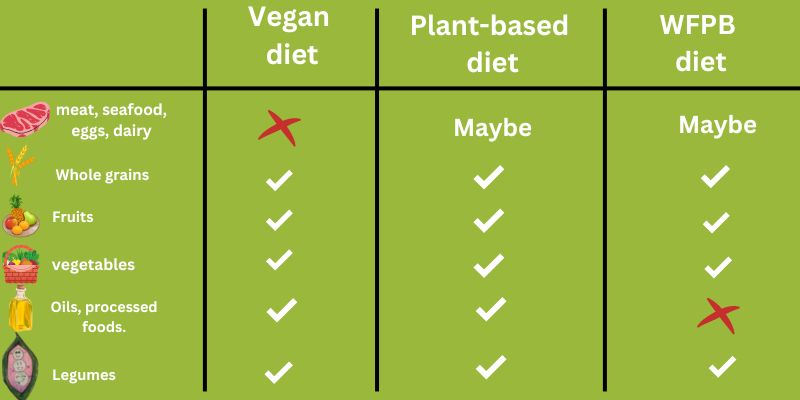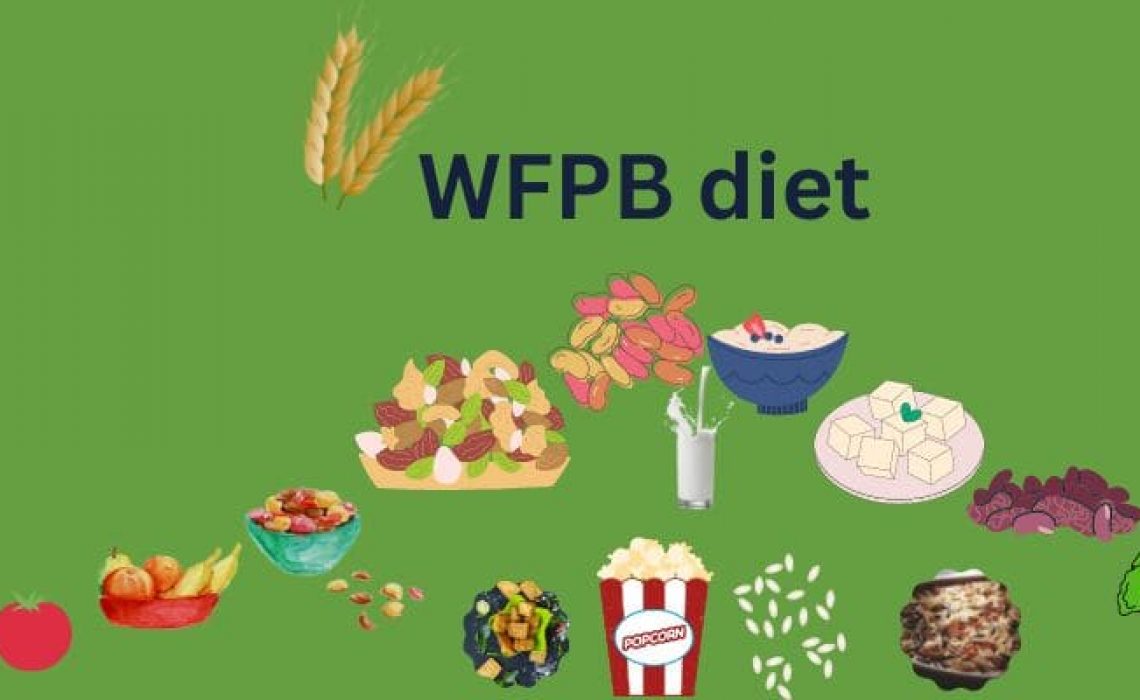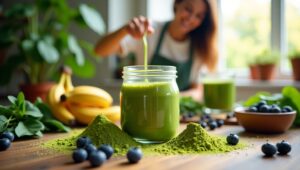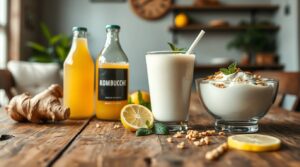As people are getting more conscious about their health, they are becoming attracted to the benefits a plant-based diet offers. A plant-based diet can be categorised into different types based on slight variations in the diet plan. The WFPB diet, or “whole food plant-based diet,” is one of the healthiest types of plant-based diet plan. As per its name, the WFPB diet focuses on plant-based foods that are whole in nature, which means they are unprocessed, fresh, and in their purest form. While it is flexible, it is not as strict as a vegan diet.
Table of Contents
Toggle1. What is a WFPB diet?
The term “whole foods, plant-based diet” (WFPB) does not have a universally accepted definition. As opposed to being a set of food rules, the WFPB diet is more of a lifestyle. Plant-based foods vary depending on what amount of animal products a person eats.
The basic principles of whole food plant-based diet are the following:
- Growing whole foods is simple.
- Processed foods should not be included.
- Reduce animal products.
- Vegetables, fruits, grains, legumes, nuts, and seeds make up the majority of your diet.
- Added sugar, white flour, and processed oils aren’t included.
- WFPB prioritises nutritious, locally-produced foods.
- It’s often mistaken for a vegetarian diet. However, these vessels aren’t identical.
- Milk, meat, poultry, seafood, eggs, and honey are avoided by dieters. Some vegetarians eat eggs, seafood, or dairy products.
- WFPB eats flexibly. Animal products were forbidden for the disciples.
- WFPB dieters don’t eat animal meat, while others eat fewer eggs, poultry, seafood, meat, and dairy products.
2. What is the difference between the WFPB diet and Vegans Diet?
Even though there are many ways to define “plant-based,” or WFPB, and “vegan,” most people agree that there is a clear difference between the two.

Here’s a link for further reading on the subject: Plant-based diet, vegan, Benefits of a plant-based diet
3. Is a WFPB diet Healthy?
Yes! Plant foods are nutritious and rich in fibre, healthy fats, protein, vitamins and minerals. It is very healthy and will fulfil all nutritional needs.
4. What do you eat on a WFPB diet?
Breakfast staples like eggs, bacon, and breakfast steak are all based on animal products. When making the transition to vegetarianism, eating habits should shift toward a diet based primarily on plant-based foods. Be mindful of the quantity and quality of the animal products you consume. Milk, eggs, poultry, meat, and shellfish should be used as supplements rather than as the focus of a whole food plant-based diet.
Following plant-based foods are included in the WFPB diet:
Veggie/Fruits
- vegetable: Broccoli, Spinach, Cauliflower, Sweet Potato, Garlic, Beetroot, Carrot, Brussel Sprouts, Asparagus, Onion, Peppers, Green Pea, Onion, kale, Zucchini, Tomatoes, Curly kale and many more.
- Fruits: Apple, blueberries, pears, Grapes, jackfruits, Mangoes, Bananas, Kiwifruits, Pineapple, Coconut, papaya, Guava, Dragon fruitsBlackberries, currant, Cranberries, Strawberries, and Raspberries
Nuts and seeds
- Cashew Nut, Walnuts, Pumpkin Seed, Sunflower Seed, Dried Blueberries. Pine nuts, Brazil nuts, Dry Apricots, Shredded unsweetened coconut, and Dried goji berries
Whole Grains
- Oatmeals, Bareilly, Brown rice, popcorn, quinoa, wild rice, whole-wheat bread, Maize & corn, and Amarnath
legumes
- Lupins, Black beans, kidney beans, chickpeas, lentils, peas, and peanuts.
Plant-based protein
- Tofu and Tempeh
Beverages
- Soya Milk, Coconut Water, Almond Milk, Hemp Milk, Rice Milk, Acai Juice, Chai Beverage concentrate-vegan, Electrolyte Water, Kombucha Drink, Sparkling Mineral Water
Choose high-quality products from the supermarket or, even better, a local farm if you plan to supplement your plant-based diet with animal products.
- Dairy product
- eggs
- Beef and pork
- Seafood
- poultry
Vegetables, fruits, whole grains, legumes, nuts, and seeds are all staples of a healthy WFPB diet. Animal products, if used, should be consumed less frequently than plant-based alternatives.
5. What can’t you eat on a WFPB diet? Plant-based diet
The Whole Foods, Plant-Based diet (WFPB) is an eating plan that emphasises consuming foods in their purest forms. Thus, foods that have been heavily processed are not included. Prioritize purchasing fresh foods, and when purchasing labelled foods, seek out items with as few ingredients as possible. The following foods should not be consumed in this diet plant:
- Junk food: Highly processed foods such as fast food and fried foods Cheeseburgers, doughnuts, french fries, crackers or nuggets.
- Oil and processed food
- Processed grains: white rice, white pasta, white bread, bagels, and more.
- Sugar and its components such as baked goods, cold cereals, candy, juice, alcoholic beverages, etc. are added.
- All animals such as meat, fish, poultry, milk, eggs and honey.
Food to reduce
Although healthy animal foods are included in the WFP diet, the following foods should be limited to all fruit-based diets.
- Poultry
- Beef or Pork
- seafood
- Dairy product
- Sheep
- Eggs
- Game
6. Is alcohol allowed on the WFPB diet?
Nutritionally speaking, alcohol provides no nutrition and is rich in empty calories. One gram of alcohol contains seven calories and about one gram of fat. The hard truth is that alcohol is not a healthy drink and has been linked to many diseases like heart disease, constipation, liver disease, alcohol-related digestive disorders, and cancers like liver cancer, stomach cancer, and stomach cancer, among others. If the primary goal of the WFP diet is good health and the prevention or treatment of disease, then the amount of alcohol consumed is zero. If you choose to occasionally include alcohol in your healthy WFP diet, that’s okay! Not everything has to be 100 per cent “compatible” and that’s true.
7. Benefits of the WFPB diet
- We’ll finally have more energy and motivation.
- Shift our bad eating habits to good ones.
- A diet that promotes a healthy weight.
- improve our mental health.
- Avoid contracting a chronic disease.
- Improve digestion.
- It reduces blood pressure.
- improve our immunity.
- Reduce inflammation.
- It maintains a healthy weight.
- It increases the fibre in our diet.
- It lowers the cancer risk.
- It reduces our carbon footprint
- Consuming more plant-based foods is one way to lessen global warming’s impact.
- It benefits the planet since less garbage ends up in landfills.
- A diet that is predominantly plant-based helps mitigate the negative consequences of climate change.
- It helps in conserving our planet.
Read this if you’re curious about this topic. Find out everything about the benefits of a plant-based diet
Conclusion
Following a WFPB diet brings many positive changes in our bodies. It is a diet high in antioxidants, phytonutrients, vitamins and minerals, and macro nutrients. These nutrients work as healing tools and start repairing our bodies.
Transitioning to a new diet may appear difficult at first, but once we see improvements in our health and overall well-being, we will be encouraged. It will boost our self-esteem and make us stick to this diet, which will lead to a healthier lifestyle.









